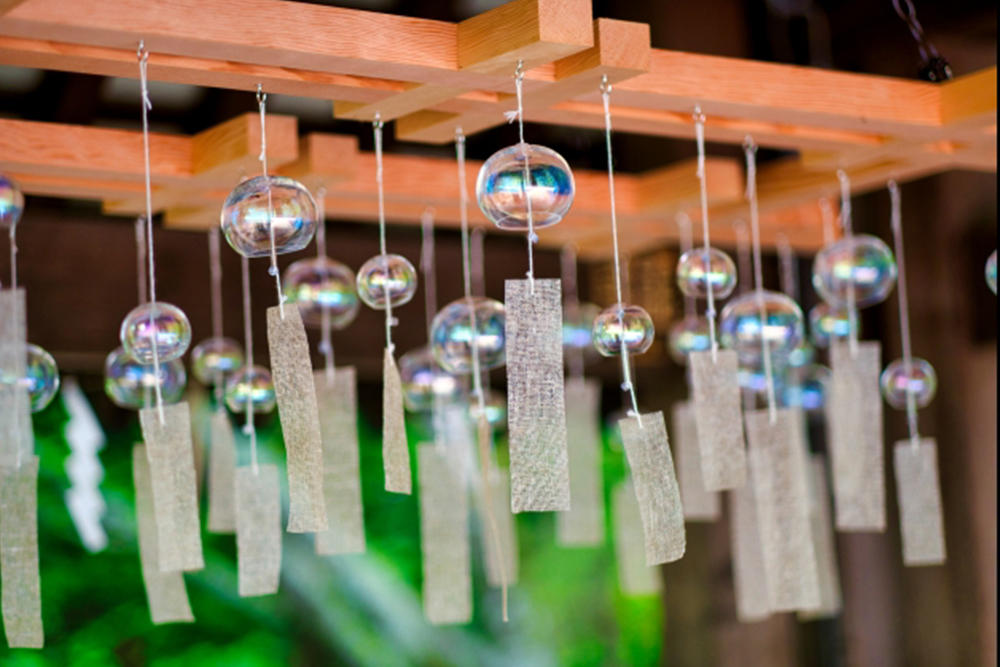Summer in Japan is very hot and humid. In the last 10 years, the tendency has been getting more and more strong every year. These days, though, we can somehow get through it comfortably thanks to the widespread use of air conditioners and others not only in public and commercial facilities but also in ordinary homes. Although we have a variety of air conditioning systems today, they were very expensive and rare just 30-40 years ago. What a blessed world we live in. It is said that the weather was not as bad as now, but the summer climate in Japan has been hot and humid for a long time. Naturally, that influence can manifest itself in various ways in the culture of the country, you know. They are reflected particularly in our daily lives, in other words, our “clothing”, “food” or “housing” ways. In “clothing”, they must be thin and easy to dry… In “food”, they can lower our body temperature or quench our thirst… In “housing”, we’ve been working hard to make sure the room is well ventilated and free of moisture… How did our ancestors in the world keep out the heat or moisture when there were no air conditioners or fans yet? It seems to have been a universal concept that “send a breeze for staying out of the heat”. Kinds of round hand fans have been used all around the world since long ago, you know?


Well, our Japanese ancestors tried to find “coolness” with “sound”, much to their surprise. They tried to take their mind off the heat or moisture by listening to the cool sounds… The direction of ideas might be a little different from ours today. As a result, they used “Wind Bells”. Of course, the bells were originally a kind of musical instrument, and were used for rituals and ceremonies. There were believes “sound” has the power to “purify the place” and “ward off evil spirits and bad luck”. Maybe they thought “We can also pay off the heat and humid with wind bells, can’t we?”, or “Wishing we could”… And maybe, they really had succeeded to create the culture to admire some kinds of “seasonal-air” with “sound”.
“Wind bell” is a kind of “bell” that makes a sound with the wind, so its sound differs depending on the material and its structure. Therefore, these bells produced are closely connected to the industries in each region. Excellent earthenware bells are made in the area where earthenware is famous, iron bells are made in the area where ironware manufacturing is popular, and glass bells are developed in the area famous for glasswork… They’re full of the history and culture of the area. Why don’t you find the color and shape that you like, and above all, the “sound” you like?




_op.png)
_001.png)
_002.png)
_003.png)
_004.png)
_005.png)
_006.png)
_007.png)
_008.png)
